WORDS: ADAM LANDAU & JEREMY MEYERS | PHOTOS: JEREMY MEYERS
With Barksdale AFB being arguably the biggest bomber base on the planet, the base’s annual Defenders of Liberty Airshow has become something of a must-attend event for aviation enthusiasts. The 2025 edition took place over the weekend of 29th-30th March. Notable this year was the absence of a military tactical demonstration, with the line up being instead filled with a selection of heavy aircraft: all three of Altus AFB’s demonstration teams and a strong showing by the locally-based B-52s. Promised highlights included a bomber heritage flight consisting of a B-25, B-29 and B-52, and a three-ship ‘bomber triad’ of B-1, B-2 and B-52.
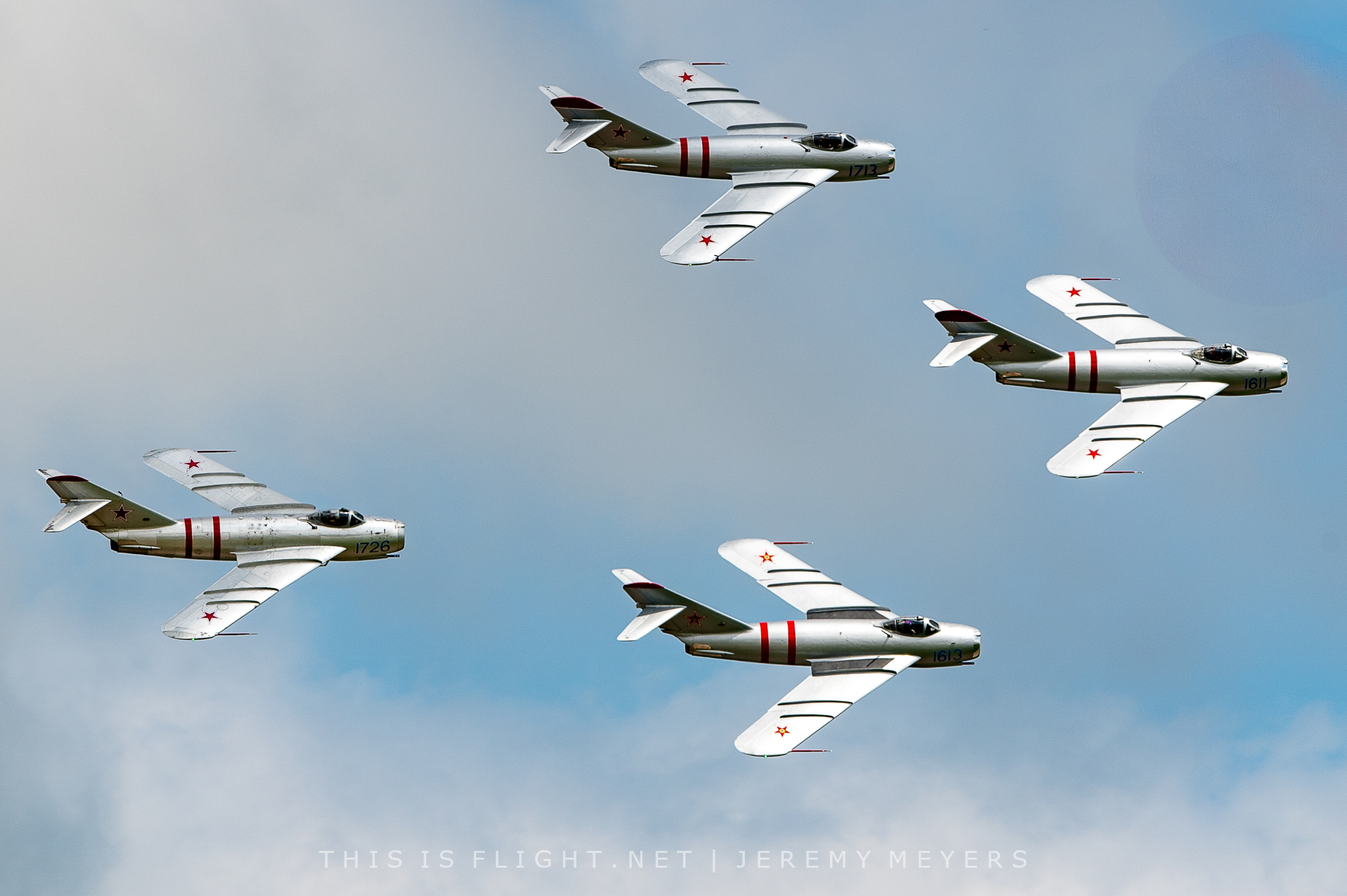
The static lineup included no fewer than four B-52s from Barksdale, two of which had special markings. The most notable was an aircraft painted to represent the NB-52 test aircraft that was used as the launch platform for the X-15, complete with high conspicuity orange markings. Another B-52, in a standard paint scheme, sat alongside a display of weaponry carried by the type.
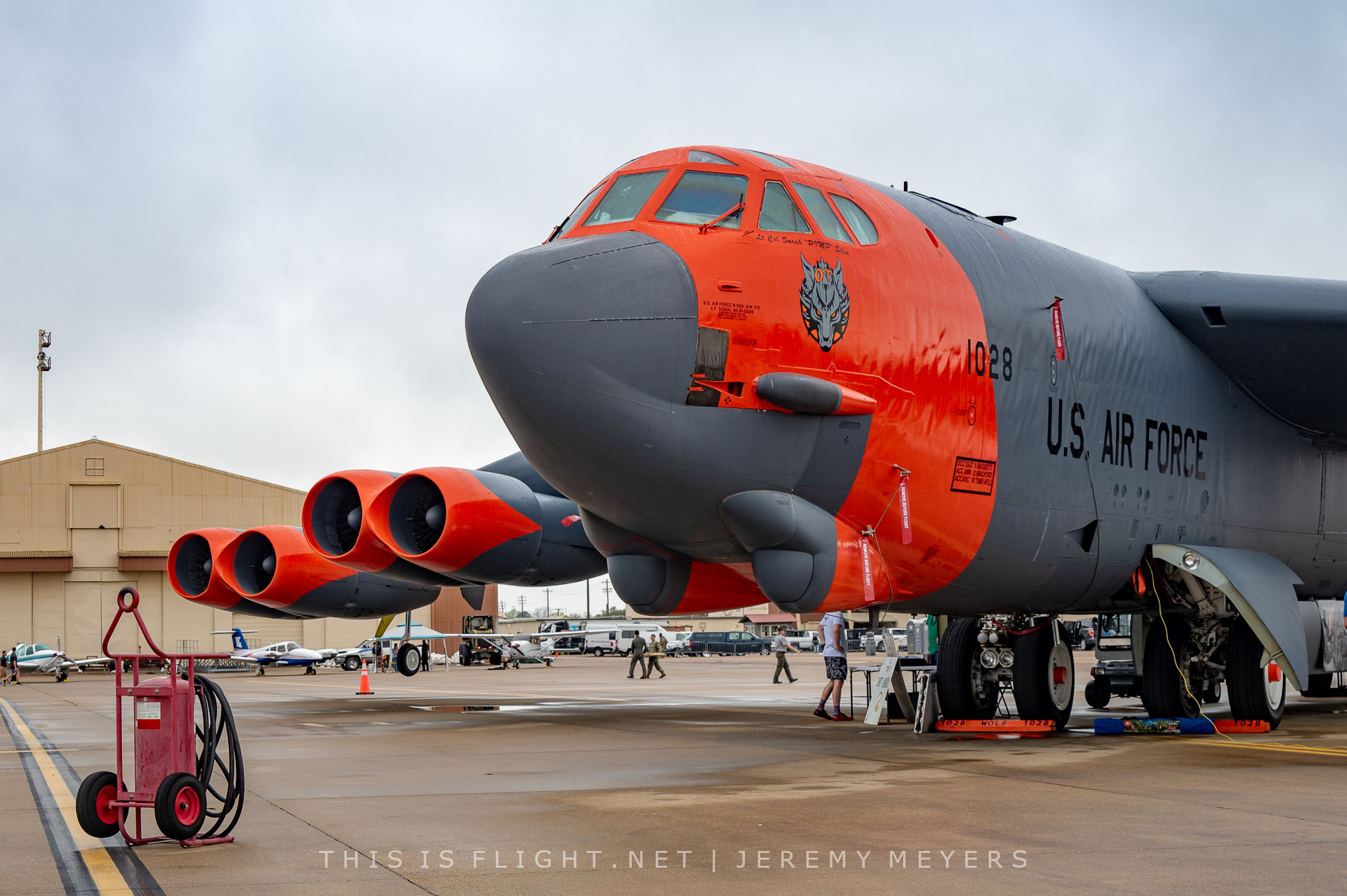
Elsewhere in the static display, visitors could see a TC-135 Stratolifter (the training platform for the Rivet Joint fleet), a P-8A Poseidon, B-1B Lancer, A-10C Thunderbolt II, F-15E Strike Eagle, an F-35A Lightning II from the 100th Fighter Squadron with heritage red tail markings and an MH-139A Grey Wolf, the USAF’s newest helicopter, which is based on the AW139.
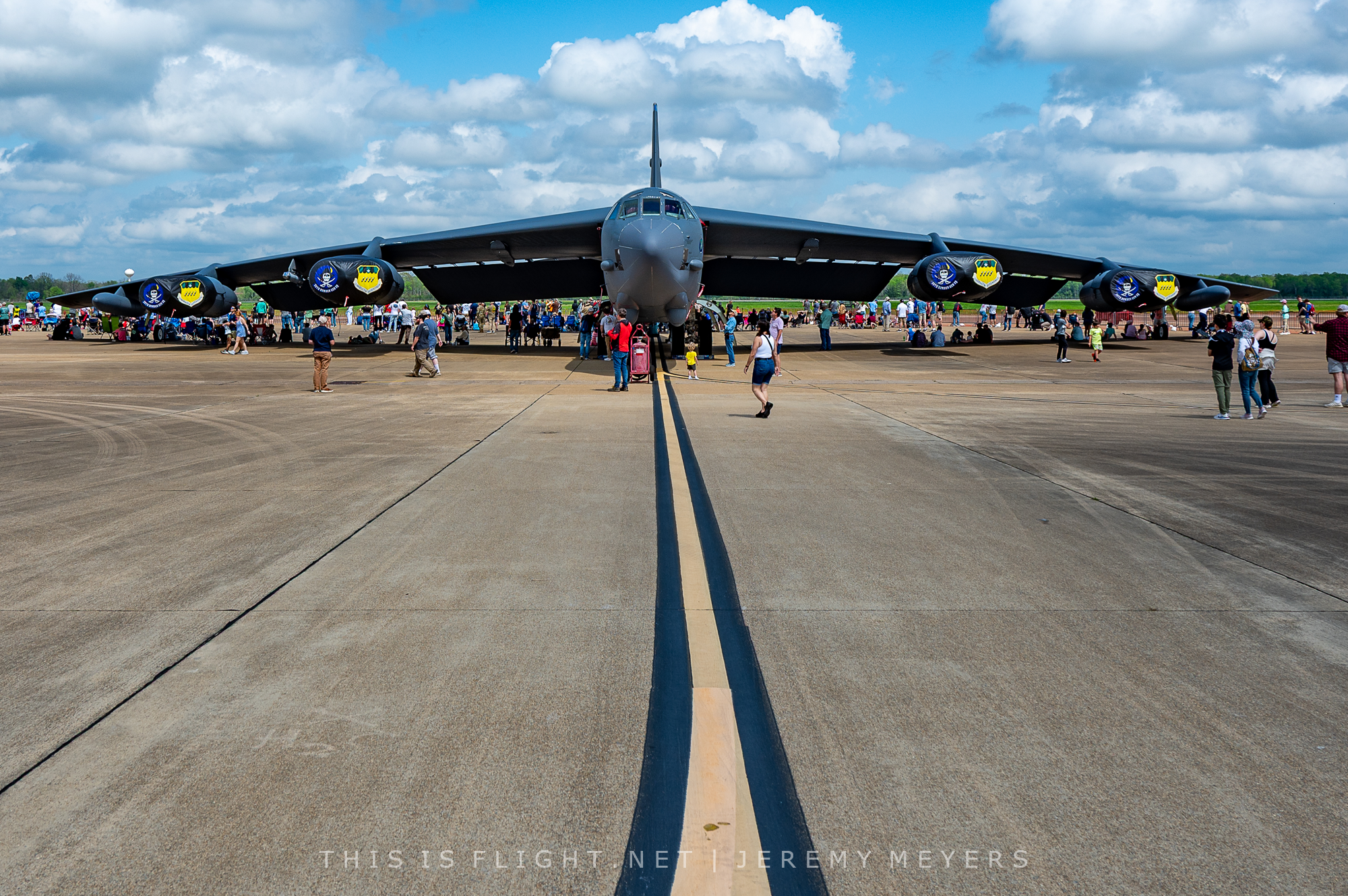
Two star participants were missing from the static display: a C-5M Galaxy and a B-2A Spirit. In fact, B-2s were entirely absent, called away due to operational reasons. The planned ‘bomber triad’ was adjusted to feature the B-1 leading two B-52s. B-29A Superfortress ‘Doc’ was another absentee – a major blow to the planned bomber heritage flight.
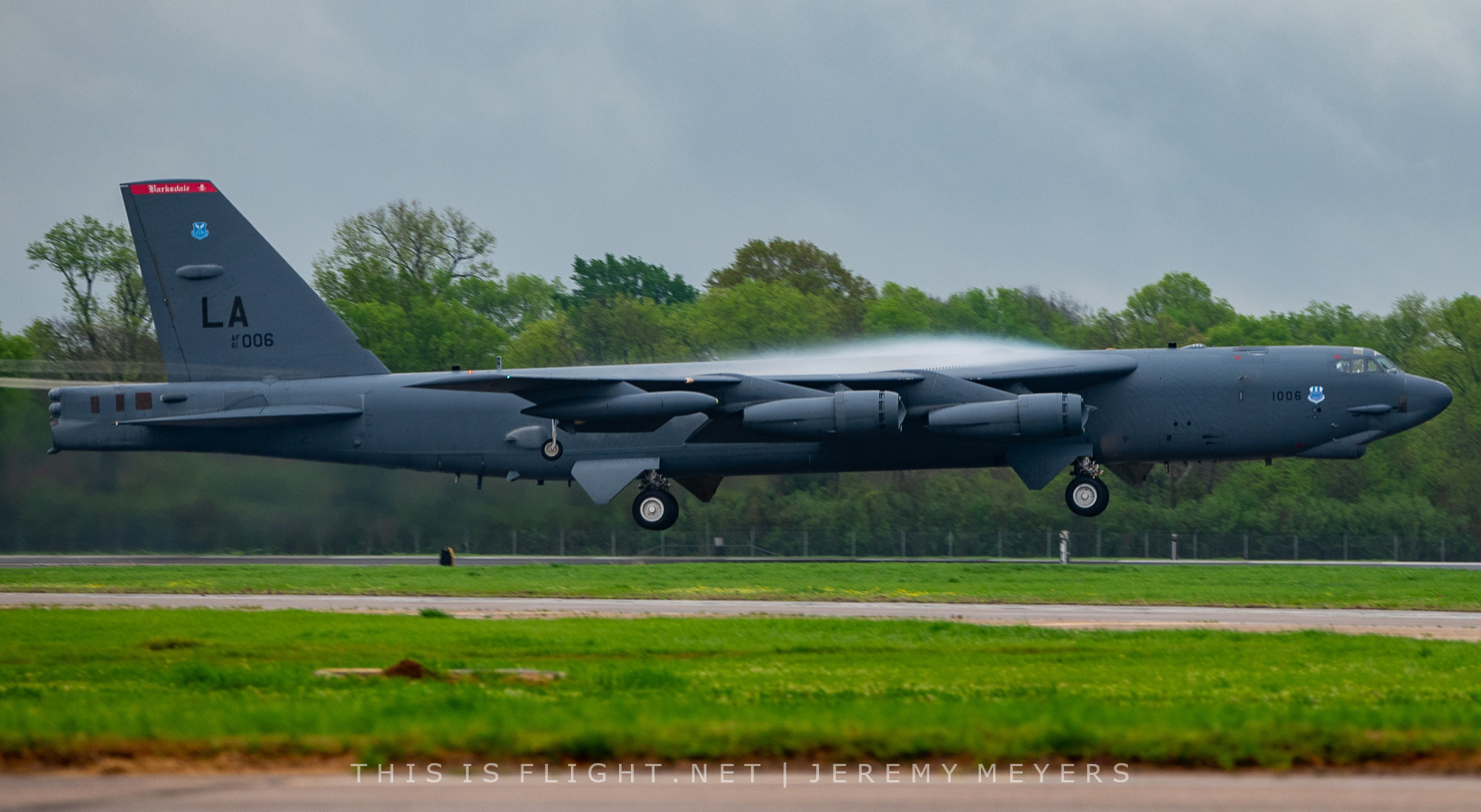
The weather on both days started with grey overcast conditions – particularly on Saturday, with the cloud sitting at only about 900ft. As a custom from previous years, spectators who arrived early were treated to the sight of four B-52s and a B-1 taking off, with two of the Stratofortresses then undertaking around an hour of pattern work while the rest of the bombers headed off to hold for the flying display. The low cloud and high humidity means that even the B-52s were pulling occasional flashes of vapour.
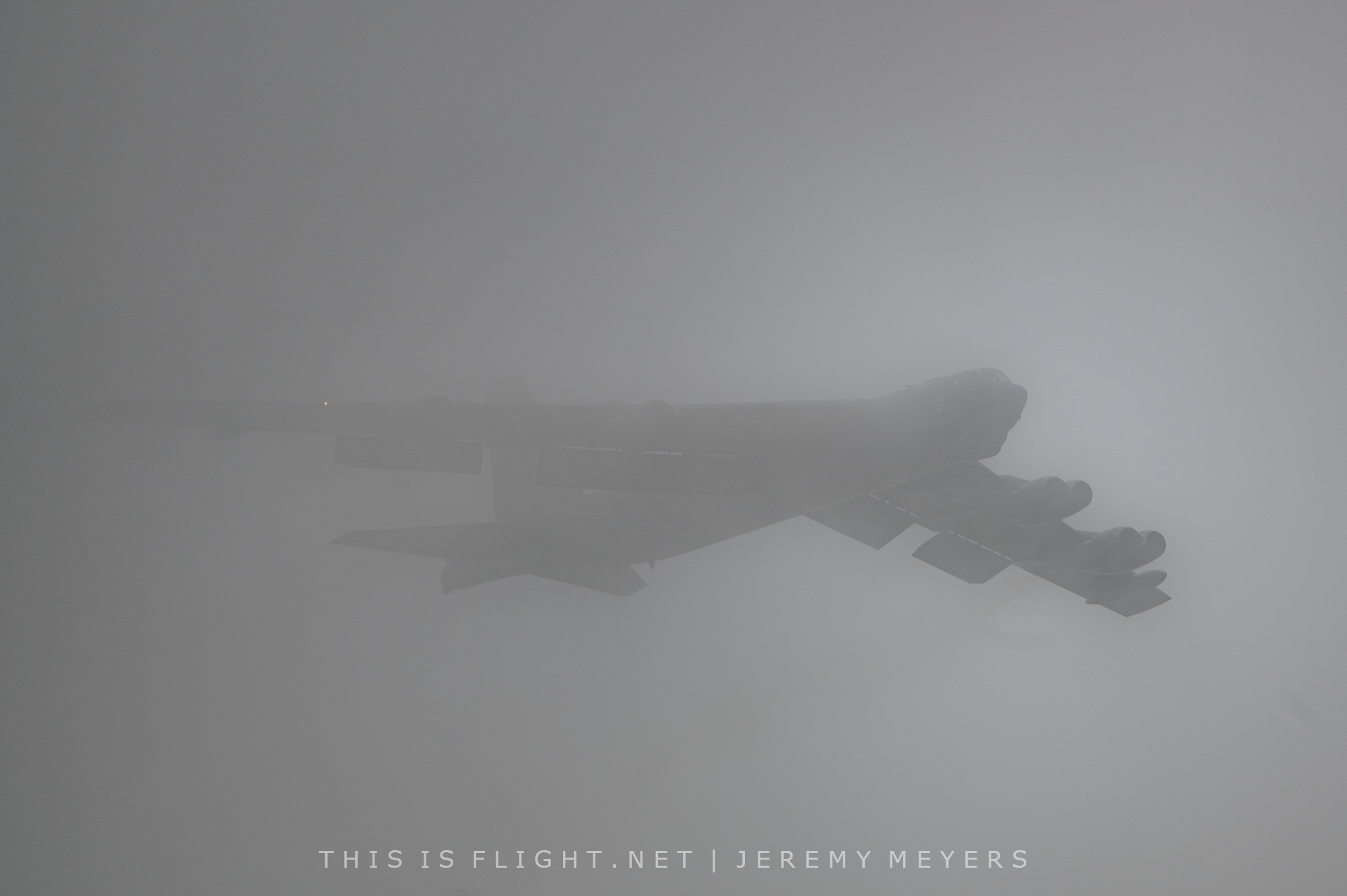
The low cloud base delayed the start of Saturday’s show, with civilian performers eventually taking to the air about an hour after the flying display had been due to start. At around the same time, the B-1 did what B-1s tend to do and broke, requiring a further delay to the flying program as it returned to land. By the time the clouds started to lift, there was no longer time for most of the scheduled military performers to take to the air before the Thunderbirds’ slot time. The remnants of the planned bomber formations (which required an indulgent 2,500ft cloud base in order to go ahead) were promptly cancelled and the only bomber participation of the Saturday show was thus revised to one fast pass each by the B-52s – a far cry from the Global Strike Command “hour of power” that had been hoped for.
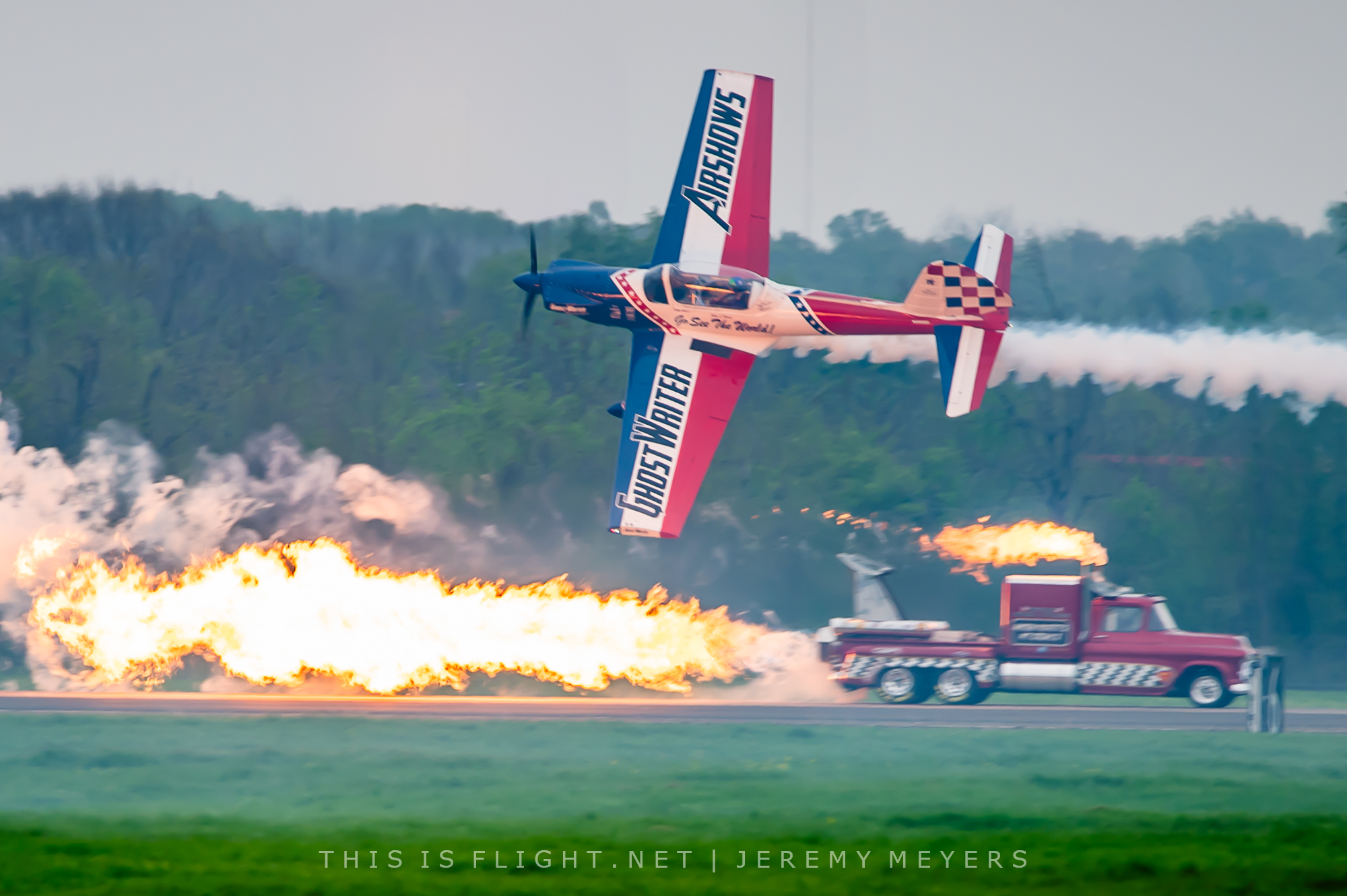
Sunday’s weather, although grey at times, was much more conducive to display flying, with a 2,500ft cloud base at the start and clear blue skies by the end of the show. After an opening ceremony conducted by members of the Red Bull Air Force, Nathan Hammond took to the air in his Super Chipmunk as the first of the main aerial performers – an impressive show that is both close to, and mostly in front of, the crowd. His display concluded with a race against the Hot Streak II jet truck.
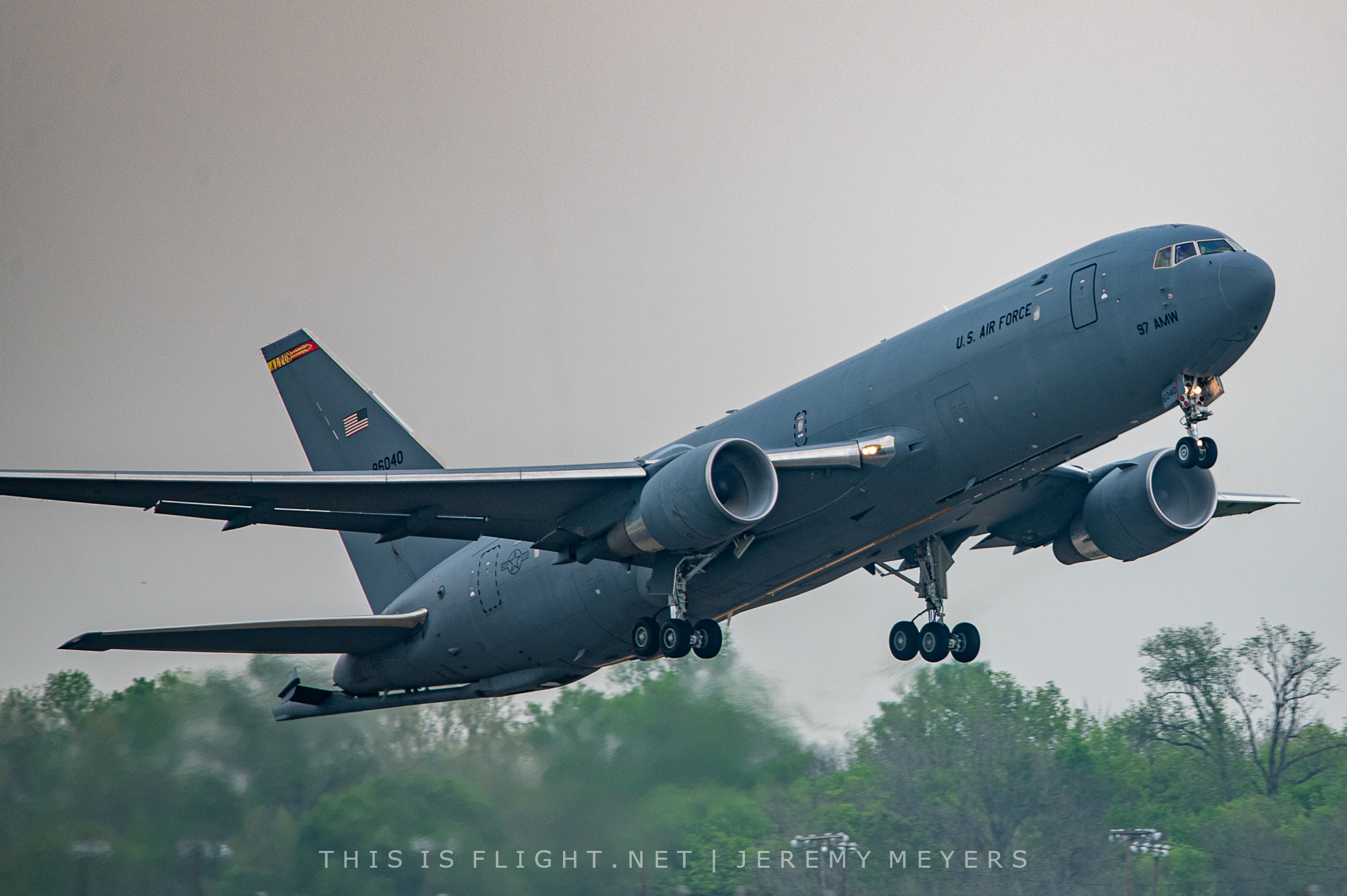
Next came two of the three demonstrations from Altus AFB: the KC-46A Pegasus and C-17A Globemaster III. The KC-46 Demonstration Team is in its first full season, having debuted at the end of last year, although “demonstration” might be a generous way of describing two sedate flypasts and a missed approach, each pass seperated by around three minutes. The C-17 then performed its familiar demonstration of airlift capabilities, concluding with an ever-impressive short field landing and some reversing along the runway.
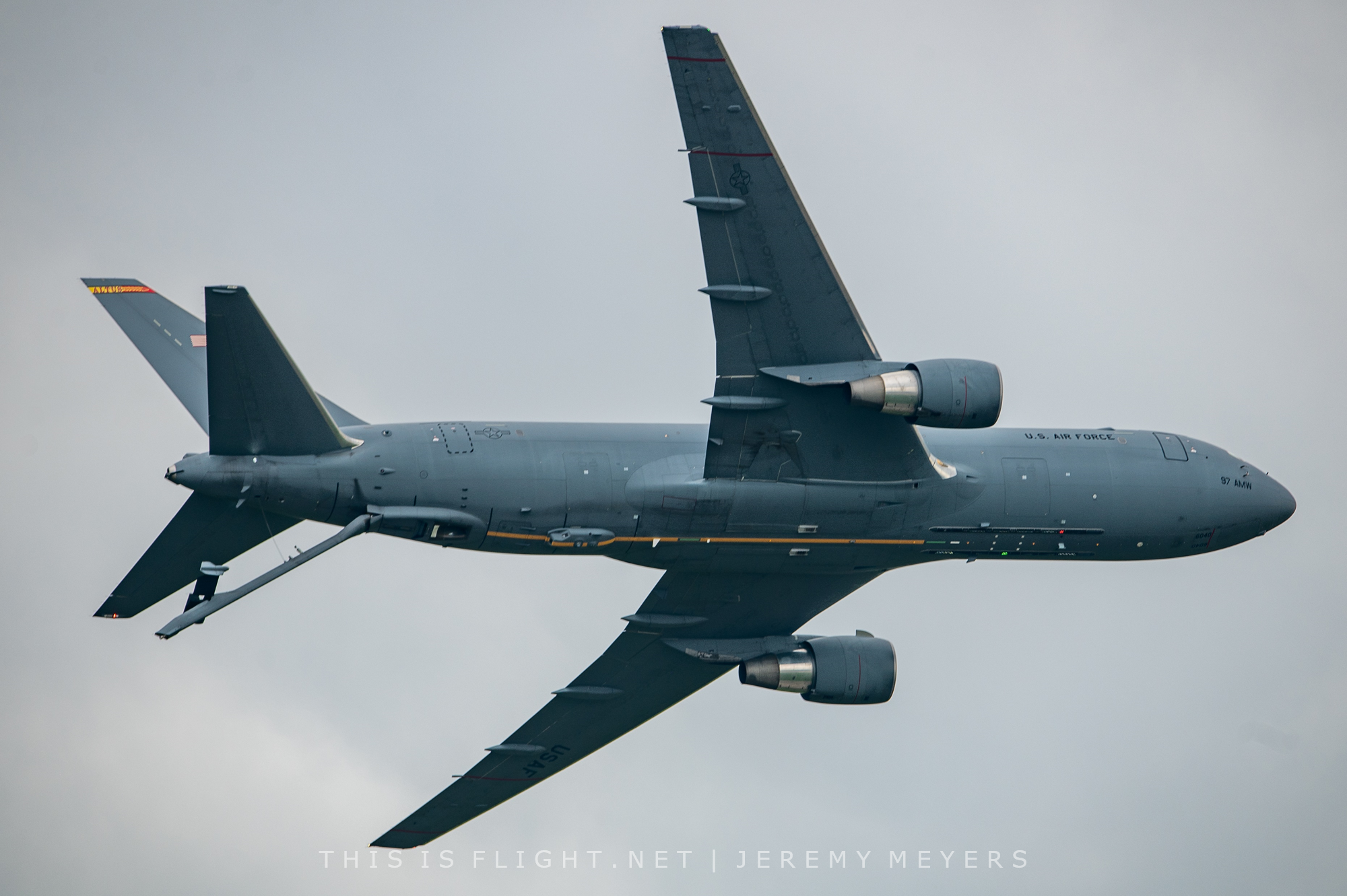
This was followed by the first warbird acts of the day: the CAF’s C-47A Skytrain “That’s All, Brother”, which performed two passes, an impeccable aerobatic routine by Scott Yoak in his P-51D Mustang “Quicksilver” and a short jet interlude by Rich Dawe in the Jet Provost T.5, complete with commentary by “real life British man” and This is Flight editor Adam Landau.
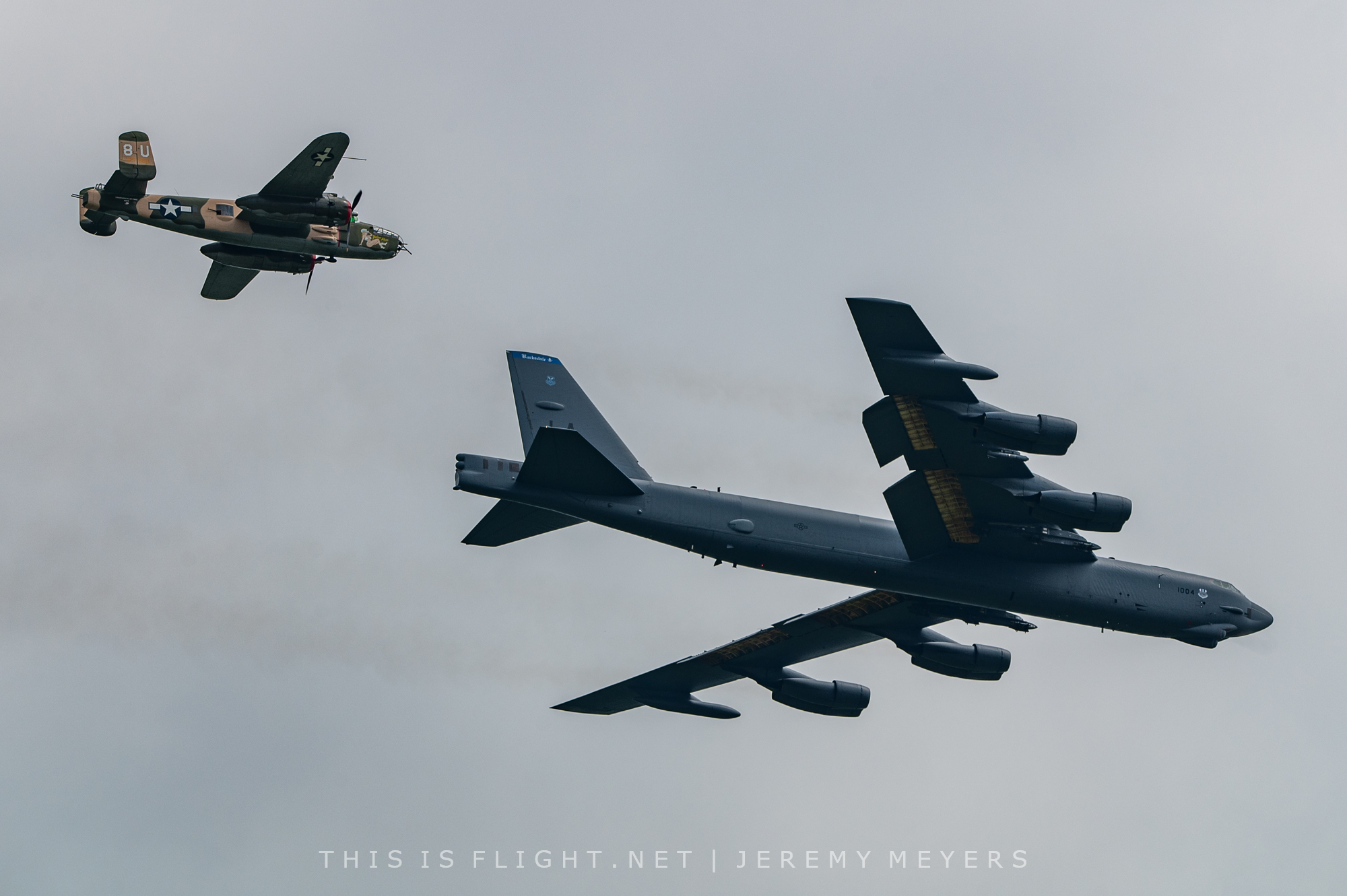
Attention then shifted to the B-52s, with two very rare formations: first, what remained of the bomber heritage flight, with a B-52 leading B-25J Mitchell “Yellow Rose” from the Commemorative Air Force. Incredibly, there is only 12 years between the first flight of both aircraft. After the formation, the B-25 performed a solo display that included some very steep, photogenic topside passes.
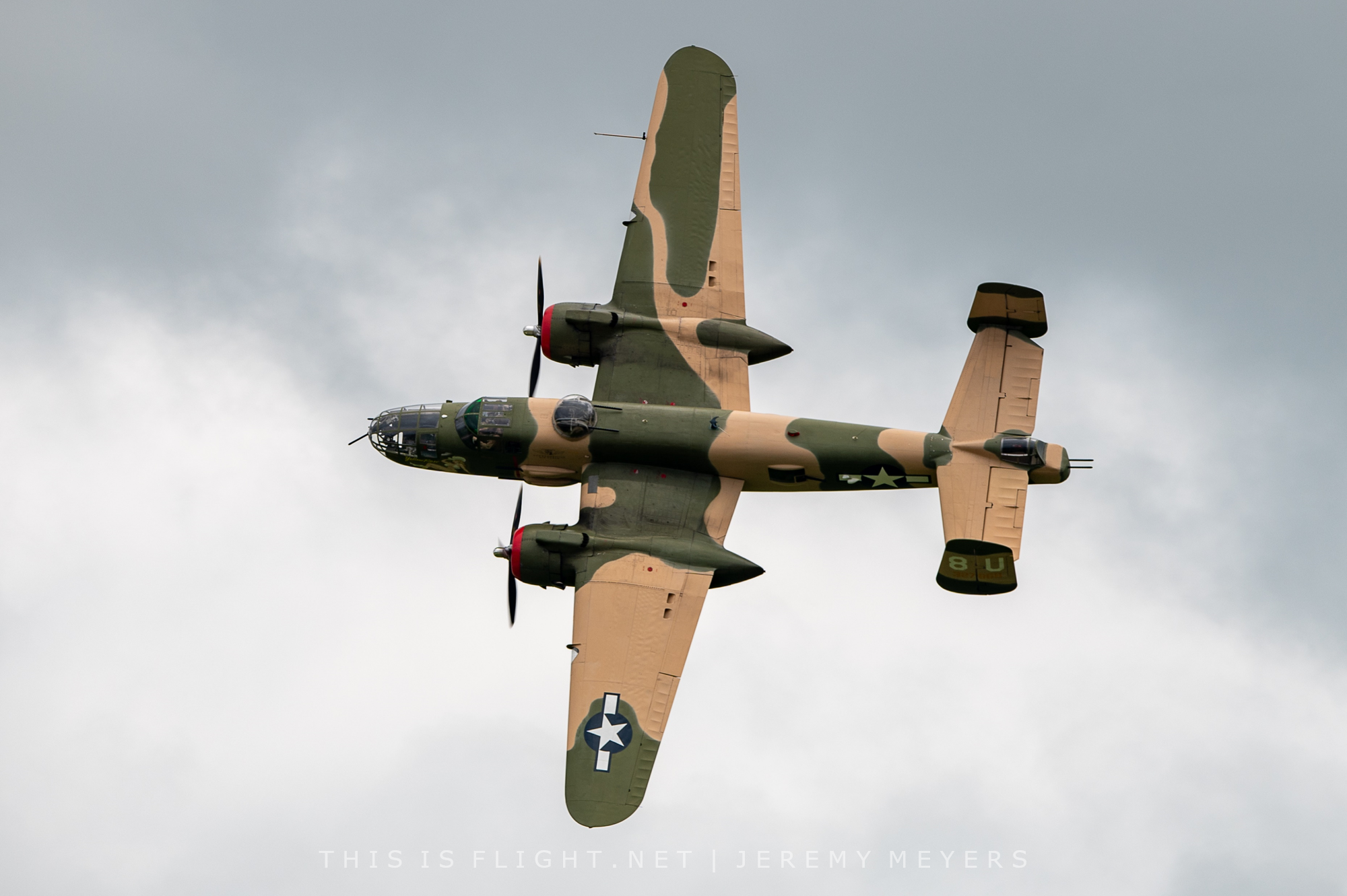
Next, a the second B-52 flew through, trailing behind a KC-135R Stratotanker for a much-anticipated pass imitating aerial refuelling. While this was happening, the first B-52 had whipped back around the crowd and then performed a final pass, accompanied by a wall of fire from the CAF Blastards pyrotechnics team. The KC-135 then performed two further solo passes before coming in to land.
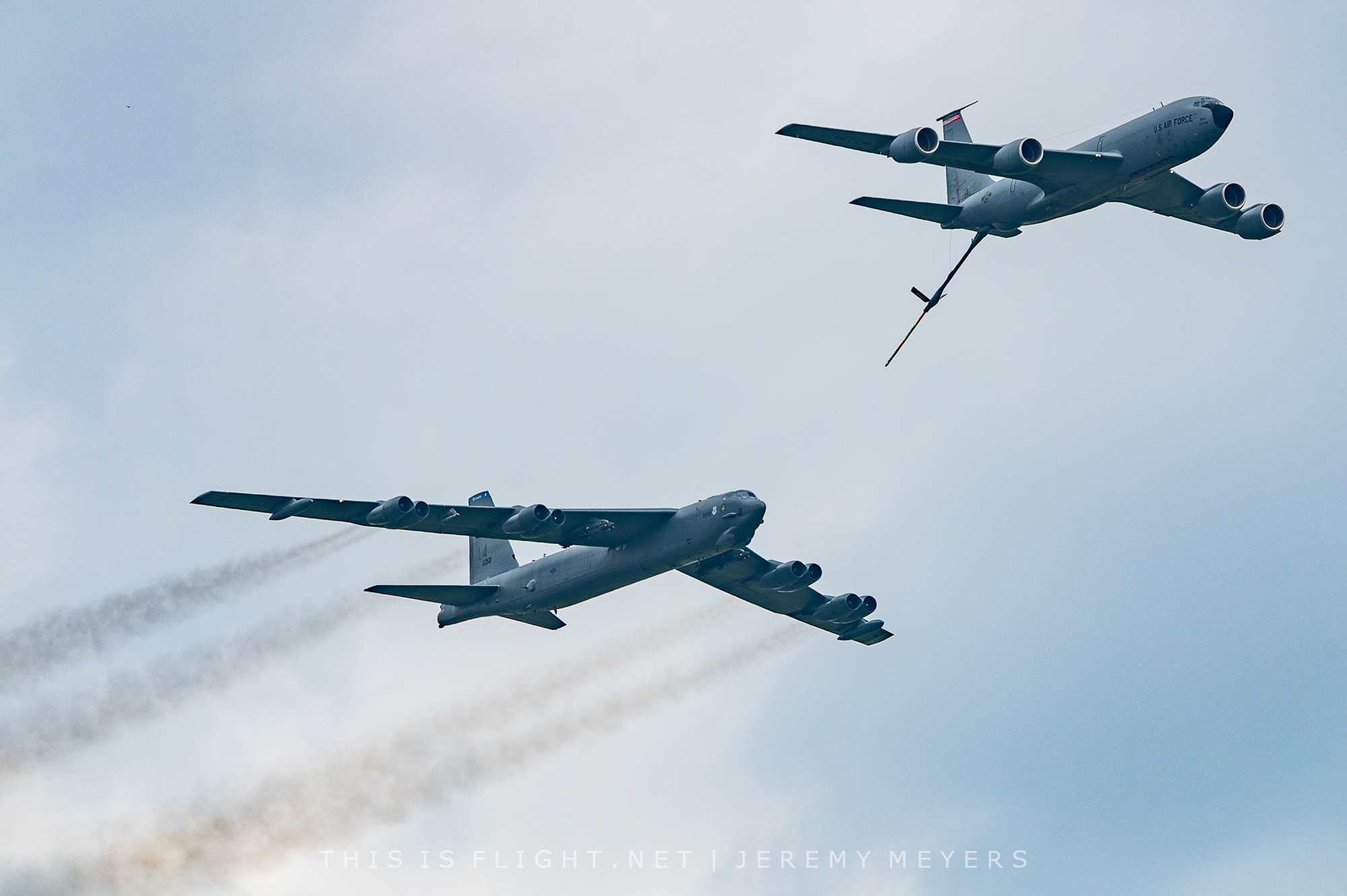
Next came a hugely anticipated performance: the first ever four-ship routine by the Fighterjets, Inc. MiG-17 display team led by Randy Ball. Although four MiG-17s have flown together at a North American airshow once before, conducting flypasts at AirVenture 2024, this was the first time that four MiGs had been seen performing a fully-choreographed airshow routine. Their show consisted of four close formation passes in box and echelon formations (two photo passes, and two showing the underside), before the jets split into pairs which performed simultaneous racetrack patterns, their low and fast passes being accompanied by further pyrotechnics from the Blastards. It was a welcome addition and likely won’t be the last time we see them on the circuit.
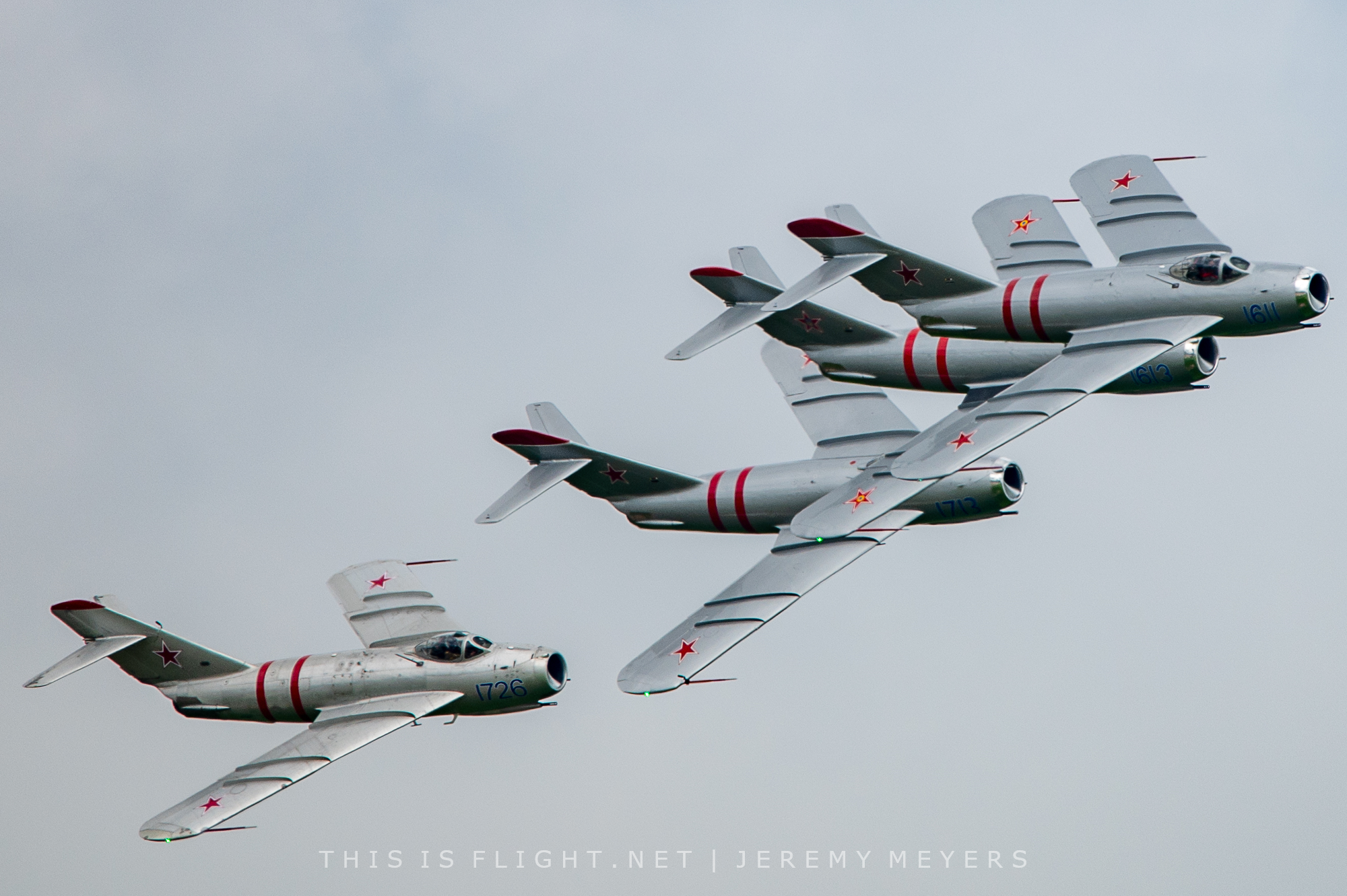
Continuing the Vietnam War theme, we were then treated to two displays by the Sky Soldiers. This included a very energetic (if slightly distant) solo routine by one of their AH-1F Cobras followed by a slightly drawn-out combat search and rescue demonstration in which two UH-1H Hueys located and rescued a downed airman, while two AH-1F Cobras and a T-28A Trojan provided close air support.
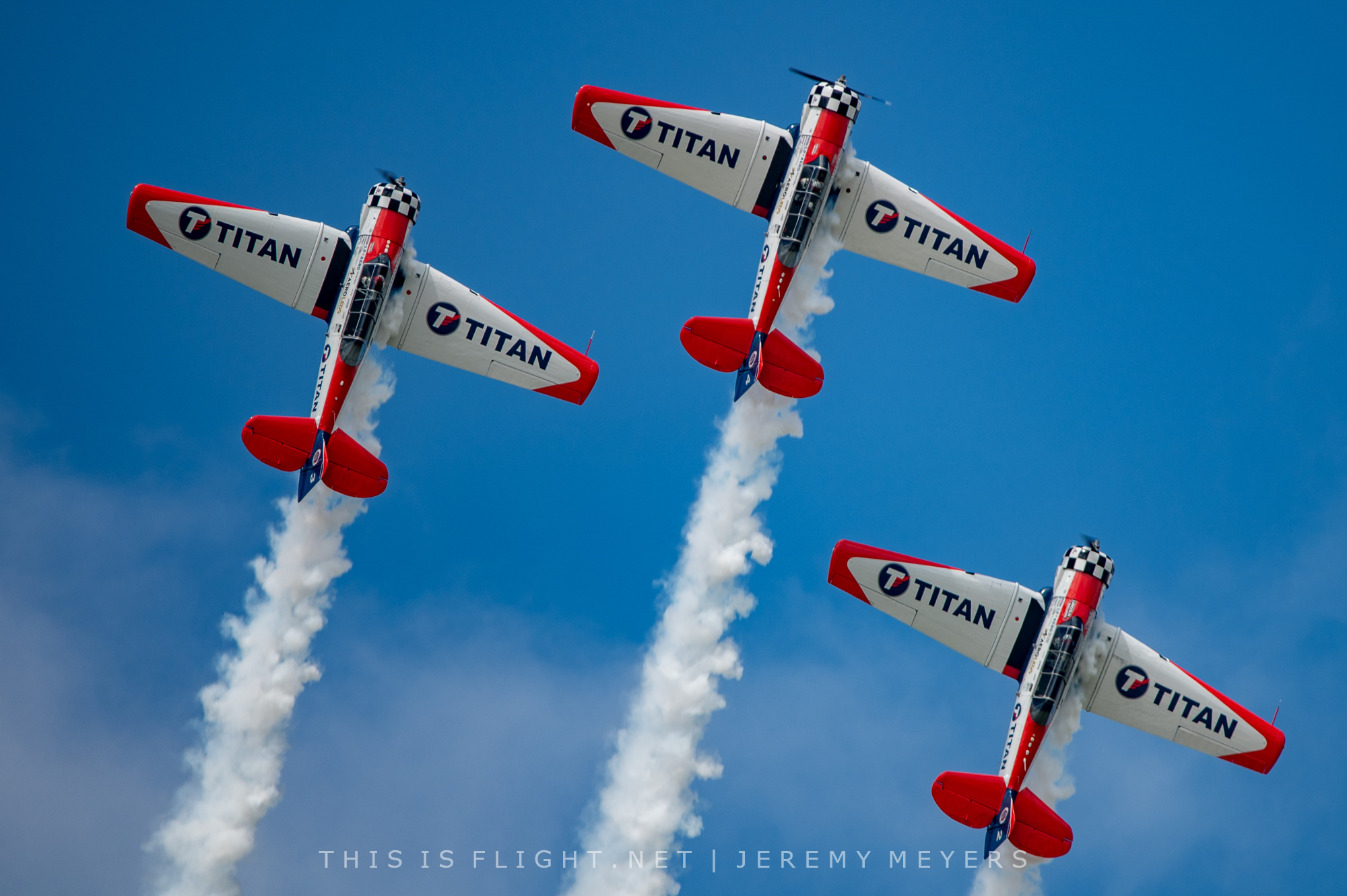
The last segment of the day included Jeremy Holt’s Pitts Model 12, the US Army’s Golden Knights parachute team, the three-ship Titan Aerobatic Team and the Red Bull Air Force. The Red Bull guys are a dynamic, enjoyable and polished watch, combining base jumping, wingsuit jumping, helicopter aerobatics by Aaron Fitzgerald in the Bo105 and conventional aerobatics by Kevin Coleman in his one-of-a-kind Extra 300SHP.

Closing out the day was the USAF Thunderbirds. There were only five jets, with the #3 being absent from the show; a pilot is currently being trained to fly in that #3 position, but hasn’t yet been cleared to perform in public. About an hour after the Thunderbirds landed, the final flying action of the day occurred with a formation run-and-break by the two B-52s. Alas, the crowd had almost entirely left by this point, and there was no warning of the bombers’ impending arrival, which stung a little as it would have perhaps the single most impressive moment of the day had it been properly integrated with the show!
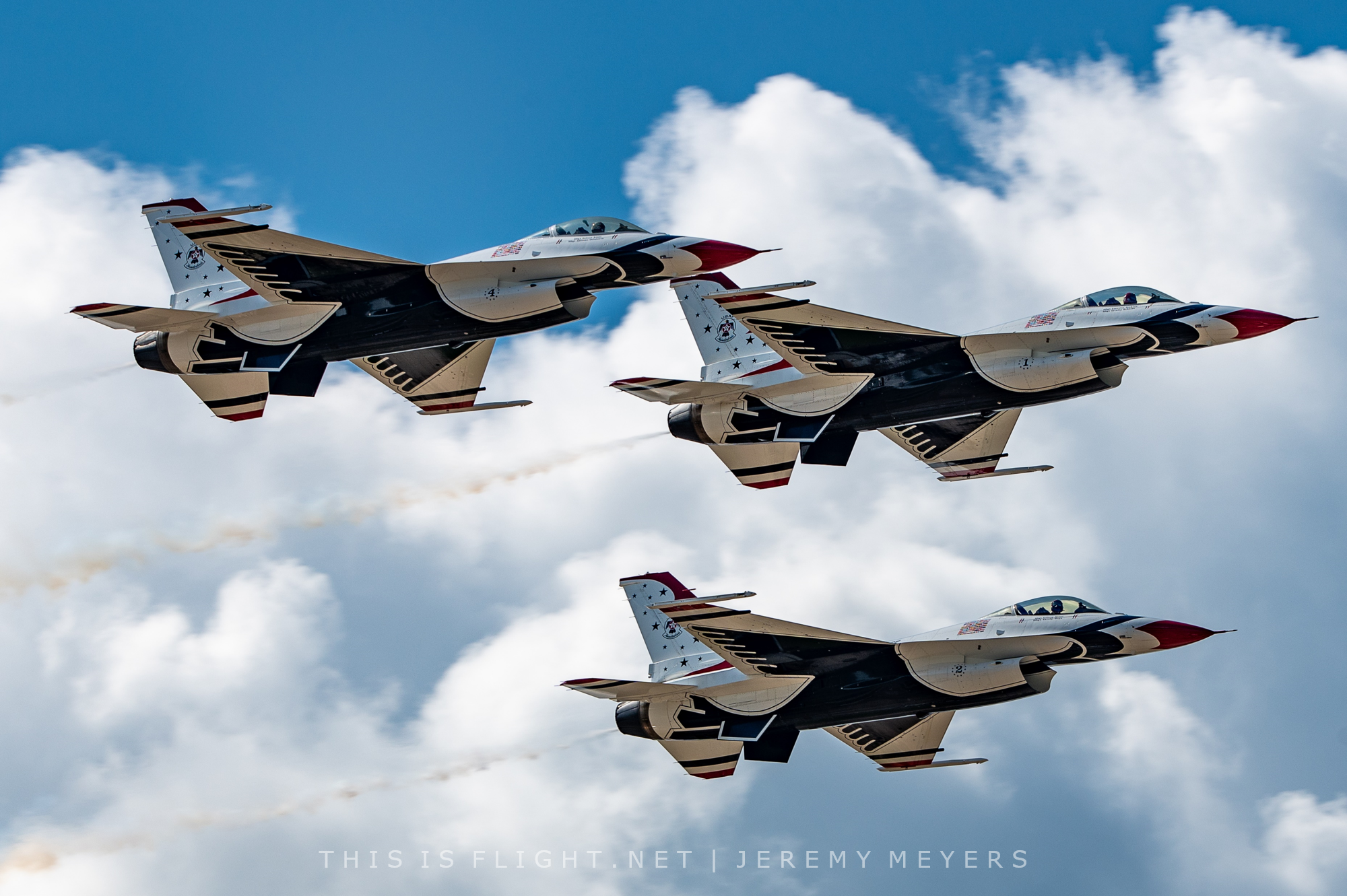
On the ground, this year’s edition of the Defenders of Liberty Airshow seemed to include more enclosures and a slight shift in the crowd line from previous years. The President Club and Commander’s Tent occupied much of the prime real estate, and although there is plenty of general admission space in front of the Thunderbirds, this area is considerably set back from the corner markers, making the displays feel a little more distant than usual. Perhaps the greatest area of improvement could be with the planned and advertised shuttle routes; there was a host of buses carrying people to the off-base location, but for those using the on-base car parks the shuttle bus coverage was sparse and many people ended up walking to their vehicle rather than waiting to be picked up. One other cause for remarks was the rule about water bottles. Guidelines were given and well promoted, with organizers stating that empty water containers were welcome. What they did not define was the requirement for empty water containers to be clear; this meant several people had to return to their vehicles to deposit empty water bottles, delaying their entry.
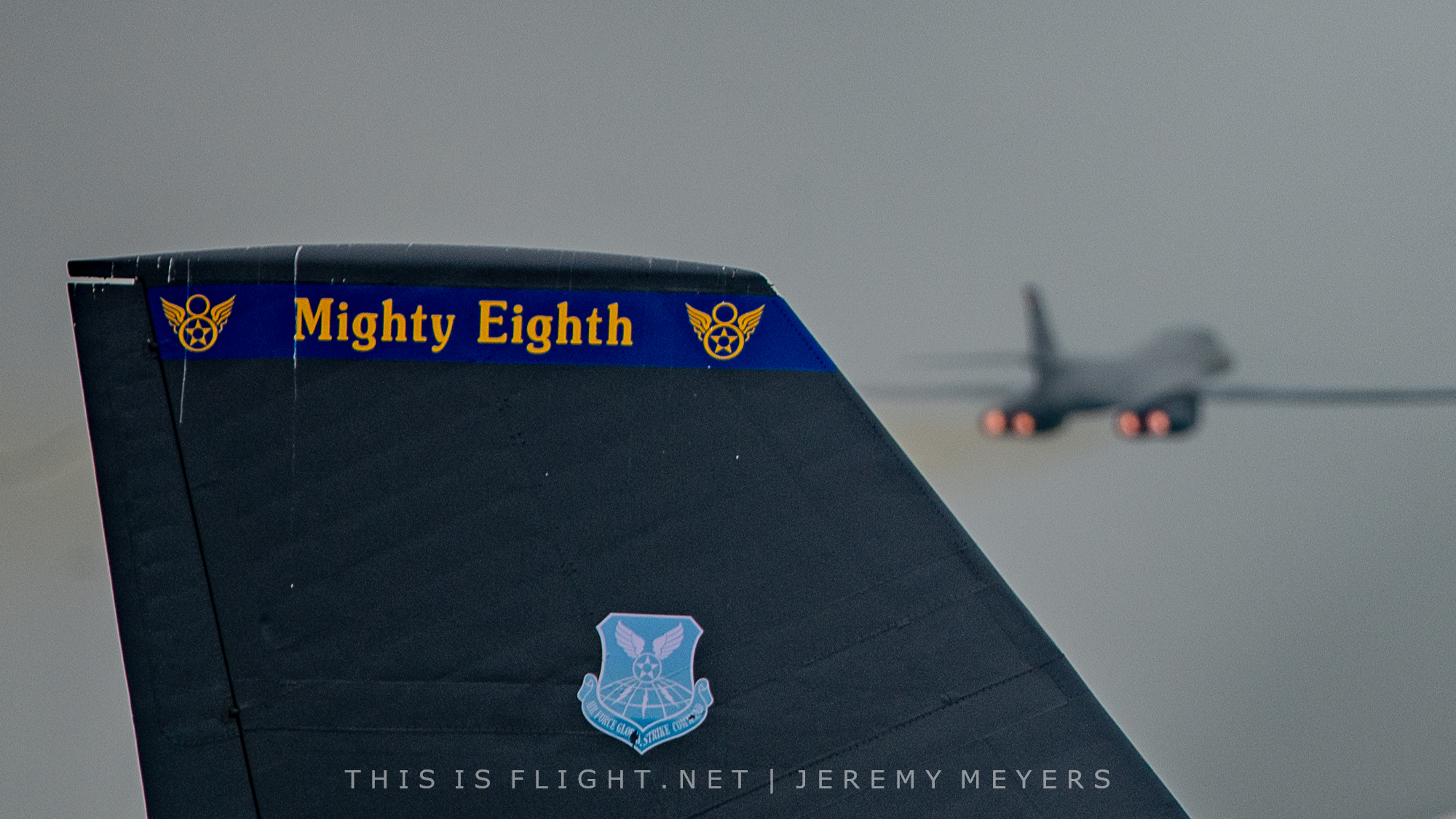
Overall, though, Barksdale hosted a solid airshow with a good mix of performers that catered both to the discerning enthusiast and to the general public. It is a testament to the quality of the show that, despite losing a B-1, B-2 and B-29 from the flying display line up, the day still felt busier and more varied than a typical USAF airshow, and even with these cancellations the base once again delivered a standout show with plenty of new and rarely-seen items.
Barksdale’s next show will likely be in 2027, and will likely remain as a must-see event for any aviation enthusiast.